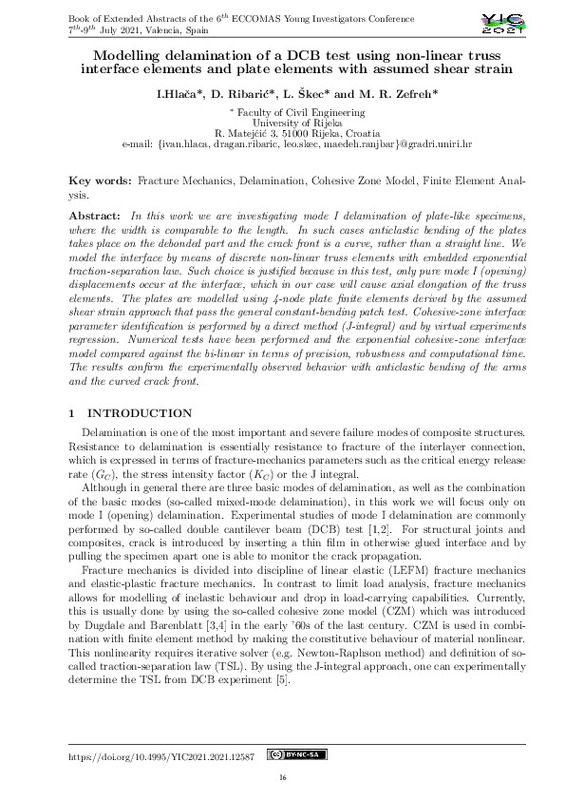JavaScript is disabled for your browser. Some features of this site may not work without it.
Buscar en RiuNet
Listar
Mi cuenta
Estadísticas
Ayuda RiuNet
Admin. UPV
Modelling delamination of a DCB test by using non-linear truss interface elements and plate elements with assumed shear strain
Mostrar el registro completo del ítem
Hlača, I.; Ribarić, D.; Škec, L.; Zefreh, M. (2022). Modelling delamination of a DCB test by using non-linear truss interface elements and plate elements with assumed shear strain. En Proceedings of the YIC 2021 - VI ECCOMAS Young Investigators Conference. Editorial Universitat Politècnica de València. 16-23. https://doi.org/10.4995/YIC2021.2021.12587
Por favor, use este identificador para citar o enlazar este ítem: http://hdl.handle.net/10251/186643
Ficheros en el ítem
Metadatos del ítem
| Título: | Modelling delamination of a DCB test by using non-linear truss interface elements and plate elements with assumed shear strain | |
| Autor: | ||
| Fecha difusión: |
|
|
| Resumen: |
[EN] Fracture resistance of structural adhesive joints is key for their application in the industry. Mode-I adhesive joint delamination is the most severe type of fracture and the possibility of this outcome should be ...[+]
|
|
| Palabras clave: |
|
|
| Derechos de uso: | Reconocimiento - No comercial - Compartir igual (by-nc-sa) | |
| ISBN: |
|
|
| Fuente: |
|
|
| DOI: |
|
|
| Editorial: |
|
|
| Versión del editor: | http://ocs.editorial.upv.es/index.php/YIC/YIC2021/paper/view/12587 | |
| Título del congreso: |
|
|
| Lugar del congreso: |
|
|
| Fecha congreso: |
|
|
| Tipo: |
|









